Image Credit: All photos: Carl Seville
Image Credit: All photos: Carl Seville Students created simple wooden blocks to hold open the lower ventilation louvers. Readouts from multiple CO2 sensors throughout the building provide real-time feedback that compares the indoor and outdoor CO2 concentrations, providing guidance on how much ventilation is required. PV panels provide shading of some south-facing windows.
On vacation in Hawaii recently (yes, life is really tough for us consultants), I had the opportunity to visit the Hawaii Preparatory Academy’s Energy Lab, the first classroom and the third building certified under the Living Building Challenge Program.
I realize that when you live in paradise, it’s easier to build a net-zero energy and net-zero water use building, but the Energy Lab serves a greater purpose and, for those institutions that have the opportunity (and the money) to create facilities such as these, they can really help to advance sustainable building.
The most interesting thing I gleaned from my visit was how engaged the students are in efficiency and building technology. These kids are learning about how buildings operate, and are in the process of auditing the rest of the campus to recommend improvements to be made.
They are becoming what someone recently described to me as “sustainability natives.” Those who become architects, builders, or engineers will, unlike most current practitioners, have sustainable principles ingrained in their thinking. Today, green building practices are often an afterthought to most professionals. But as more people grow up understanding the value of high-performance construction, sustainability will be fully integrated into their thinking and their work when they become practitioners.
Geeking out in a living building
Luckily, the day I was able to visit, Bill Wiecking, the lab director, was available. Bill spent quite a bit of time showing me around. I was a bit challenged to keep up with his rapid-fire explanations, but learned about many of the interesting features included in the building, as well as some of the challenges that they ran across.
Probably the most interesting feature (to me, at least) was the solar thermal cooling system. Because the site has a dependable cycle of the diurnal temperature change, liquid that is pumped into the solar panels is cooled at night, stored in tanks, then run through fan-coil units to provide air conditioning during the day.
Their passive ventilation system is elegant in its simplicity: manual louvers at waist level combine with electrically operated ones at the top of the building. Air flows up along the roof slope, limiting the amount air movement in the room while still providing necessary ventilation. The bottom louvers have a habit of closing on their own, so the students created simple blocks of wood to hold them open.
The building is equipped with indoor and outdoor CO2 sensors to determine when ventilation is required. Instead of basing their ventilation on absolute CO2 concentrations indoors, they compare inside to outside to identify when indoor concentrations are high enough for ventilation. They originally ran their ventilation automatically, but reverted to manual controls to avoid over- or under-ventilating.
Everyone has problems
Bill and I did a bit of commiserating about our experiences fighting with mechanical engineers about HVAC system sizes, and trying hard to get contractors to do what you really want from them.
He pointed out a set of ¾-inch copper lines that were installed instead of the 1-inch lines specified for the thermal cooling system. The smaller lines didn’t work and were ultimately abandoned in place when the properly sized ones were installed.
Design and construction of the building were challenging, and building operation has been challenging, too. Doors to the offices and workrooms with individual minisplit air conditioning systems (used primarily for dehumidification) are often blocked open with the AC running. Behavior problems never stop being an issue, even in the best buildings.
The CO2 sensors are costly and require frequent replacement. And one thing I noticed was the significant quantity of cobwebs throughout the building. Spiders must love how the passive ventilation brings loads of insects right into their webs. While they don’t cause any problems, the webs detract from the look of the building. Cleaning them is likely an ongoing project, sort of like painting the Golden Gate bridge.
Location, location, location
Bill mentioned that many visitors to the lab talk about replicating the building in other regions, not realizing that the details of this building (like those of most buildings) are climate-specific. While I love the passive ventilation, the louvers don’t provide much in the way of insulation or air sealing, so they wouldn’t be very useful in most climate zones. The solar thermal cooling is a great idea, but it will only work in certain climates where there is enough of a daily temperature swing.
This building is a great experiment, and the kids who use it are learning amazing lessons that will stay with them throughout their lives. It is not a building type that will work in most climates, but as a research facility, home to many building science experiments, and an example of seriously forward thinking, it is a great model for schools and professionals to aspire to.
Weekly Newsletter
Get building science and energy efficiency advice, plus special offers, in your inbox.

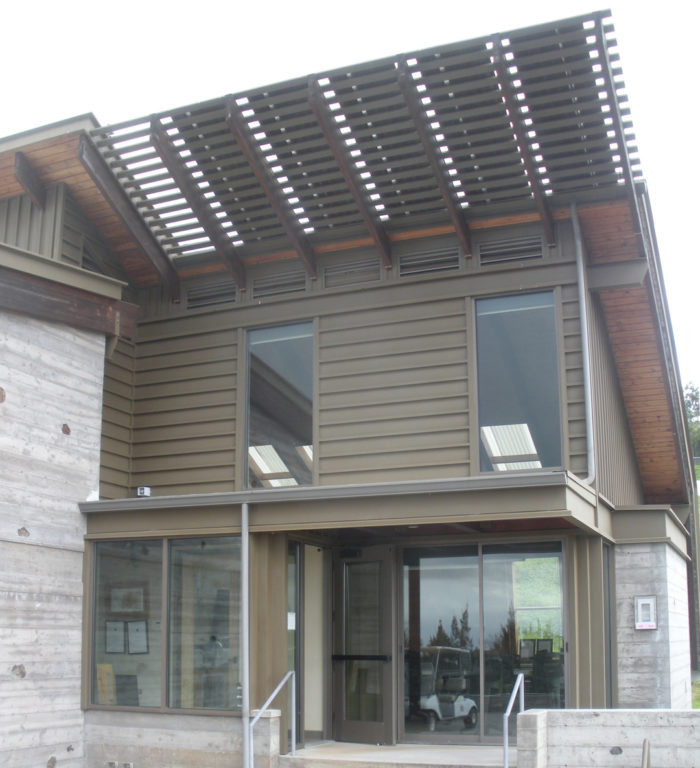




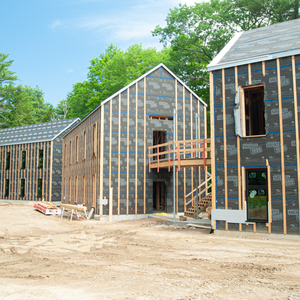
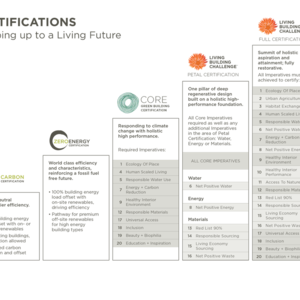
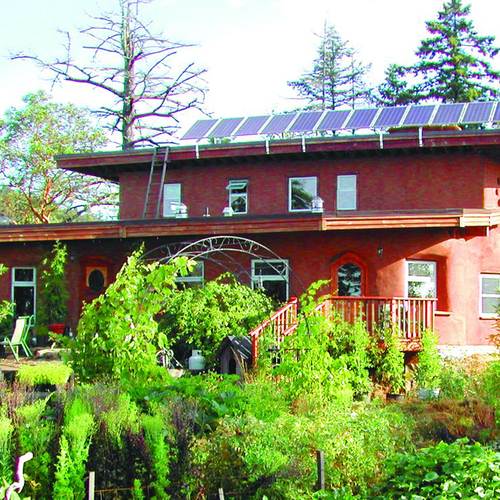
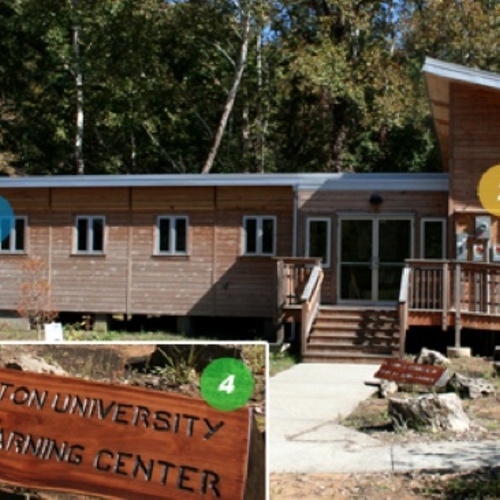






2 Comments
More Pics and Description
A 26 pic slide show of the building with additional details (click on one pic for slide show)
http://www.hpa.edu/academics/energy-lab/about-lab
Here in tornado alley( and
Here in tornado alley( and I'll include hurricane alley), it is not only energy that needs a future primarily, it's structures class room 101. Wood constructed homes kill, we don't need consultants to explain that there is plenty, decades, of empirical evidence of massive destruction, from wind and hail too. These future "professionals" need an education in safety first, as do some of the so called "consultants". Too often I see "energy consultants" giving advice that compromises structure they obviously don't understand, and that includes PHD's(physics, electrical, etc).
The scary part, some or most SFH jurisdictions, especially rural, allow homeowners to take this ill energy advice and build unsafe homes. I'm a consultant engineer, that is because I went to college to get an advance professional degree in it, structures and systems, and have 30 years designing REAL structure and systems. I have done it in many states, traveled and lived on many climate zones, no "vacation" to get "real hands on experience". Now I enjoy staying in one location as I begin to retire, tired of the road. Yes I too started out as a contractor and mechanic but, that does not make a consultant design engineer, and I still don't claim to know it all. Often it takes teams to consult properly, when I design systems I have structures in mind, and visa-versa, which in my experience most only have tunnel vision of either. Some like being subject matter experts, others diversify their career path like me. Having separate Architects, PE's, builders, contractors, subs, that don't communicate or step outside of their capacity or skill set to consult is a big issue in the USA. For the most part, builders and home owners that have never been schooled in basic design engineering principles other than the internet, which has a lot of errors, design SFHs. These homes get inspected to flawed codes influence by manufactures and committee some of which have no real experience. Further, to be a consultant or professional, you have to live in an area to fully understand it. National consultants should have grass roots experience living in the areas they consult in.
I hope future schools like this teach integrated design. It is nice to see some understand the relationship of CO2 levels and ventilation rates, add to that the effect of air tight homes in a pressurized high wind tornado or hurricane, that should be part of the standard(s).
What needs to happen first and foremost, is to take manufactures and industry lobbyist out of code. Code should be based on empirical data, design standards or allowables based on test, and safety. If that were the case in the alleys, layered light construction would be forbidden, but some how it still exist. That way these future kids/professionals can do their jobs without the politics. The sub-division also needs less constraints, restrictive covenants that get in the way of innovation, Architectural control does not belong in the hands of inexperienced home owners and/or third parties.
I looked at that night time radiation systems and posed the question out here and on other sites to get a national consensus. I seen some builder in AZ pumping water between a tank and metal roof at the recurring cost of a water pump. The response I got was low bang for the buck. Even if there is a diurnal swing, lets say 30-40F, the operating and maintenance cost for the energy basically did not show good. The AZ builder below noted a 10F cooling load drop. It took alot of testing and R&D too.
https://www.youtube.com/watch?v=mRM5nJ83-n4
http://www.michaelfrerking.com/projects.html
Seems like the answer to everything out here is "minisplit" although some including me think blowing air around a room is uncomfortable compared to radiant. Also, alot of those systems are foreign, I think another lessons the future of America needs to is to buy domestic, create jobs here for your kids, not overseas.
My .02 :)
Log in or create an account to post a comment.
Sign up Log in